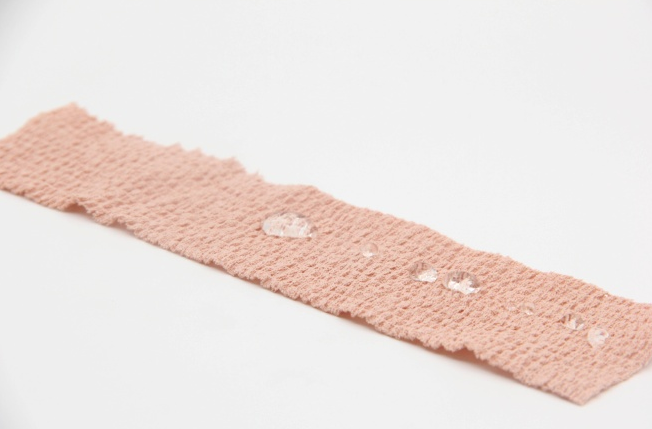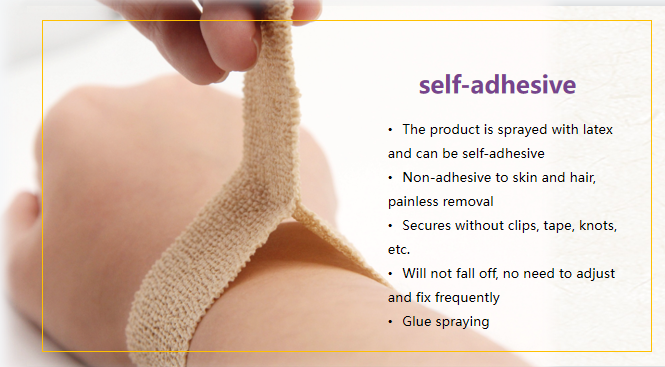Dressing a wound is an important nursing skill that promotes wound healing and reduces pain. This article will introduce ten tips for bandaging wounds, improving blood supply and lymphatic drainage, reducing edema, and promoting wound healing. Let's take a look!
Here's what you need to know before starting:
Purpose of the dressing: The purpose of the dressing is to secure the wound dressing, improve venous return and promote wound healing by improving blood supply, lymphatic drainage, and reducing edema.
Bandage Selection: Use a 4" Bandage: If you use a 2" or 3", you may be putting too much pressure on it.
Assess the wound:
Before dressing, the condition of the wound and extremity needs to be assessed, including measuring the circumference, checking the color and palpating the pulse, etc. For bony prominence and fragile skin, a soft wrap or padded unloader should be used. Take the foot as an example: measure the circumference of the smallest part of the midfoot, measure the circumference of the ankle at the smallest part above the ankle joint, and finally measure the circumference of the calf at the largest circumference of the leg below the tibial tuberosity.
Top 10 tips for self-adhesive bandages:
1. Single-layer dressing method Single-layer dressing method is the most basic dressing technique, suitable for minor abrasions and incisions. First, fix the self-adhesive bandage on the wound, and then wrap it around the wound until it completely covers the wound. Be careful not to be too tight or too loose, so as not to affect wound healing.
2. Double-layer dressing method The double-layer dressing method is suitable for deeper wounds or wounds that require more protection. First, fix the first layer of self-adhesive bandage on the wound, then wrap it around the wound, and then return to the starting point. Then, wrap a second layer of bandage around the wound, crossing the first layer in a cross shape. Finally, wrap around the wound again to secure the bandage.
3. Arrowhead Wrap The Arrowhead Wrap is suitable for wounds that require more support, such as ankle sprains. First, fix the self-adhesive bandage on the wound, and then wrap it around the wound. Next, wrap the bandage diagonally upwards from one side of the wound, and then diagonally downwards from the other side, forming an arrow. Repeat this step until the wound is completely covered.
4. Four-leaf clover dressing The four-leaf clover dressing is suitable for wounds that require more support, such as knee sprains. First, fix the self-adhesive bandage on the wound, and then wrap it around the wound. Next, wrap the bandage diagonally upwards from one side of the wound, and then diagonally downwards from the other side to form a "V" shape. Then, wrap the bandage once around the wound, then diagonally up from the other side, and then diagonally down from the other side, forming a four-leaf clover shape. Repeat this step until the wound is completely covered.
5. Snake dressing The snake dressing is suitable for wounds that require more support, such as wrist sprains. First, fix the self-adhesive bandage on the wound, and then wrap it around the wound. Then, wrap the bandage around the wound once, then wrap it diagonally upwards, then wrap it around the wound once more, and then wrap it diagonally downwards to form a snake shape. Repeat this step until the wound is completely covered.
6. Corner dressing method The corner dressing method is suitable for wounds that need more support, such as arms or legs. First, fix the self-adhesive bandage on the wound, and then wrap it around the wound. Next, wrap the bandage once around the wound, then diagonally up from one side of the wound and down from the other side to form a corner. Then, wrap the bandage once around the wound, then diagonally up the other side, and then diagonally down one side of the wound to form another corner. Repeat this step until the wound is completely covered.
7. Spiral Wrap The spiral wrap is suitable for wounds that require more support, such as arms or legs. First, fix the self-adhesive bandage on the wound, and then wrap it around the wound. Next, wrap the bandage around the wound once, then wrap it diagonally upwards, then wrap it around the wound once more, and then wrap it diagonally downwards to form a spiral. Repeat this step until the wound is completely covered.
8. Corner dressing The corner dressing is suitable for wounds that require more support, such as arms or legs. First, fix the self-adhesive bandage on the wound, and then wrap it around the wound. Next, wrap the bandage once around the wound, then diagonally up from one side of the wound and down from the other side to form a corner. Then, wrap the bandage once around the wound, then diagonally up the other side, and then diagonally down one side of the wound to form another corner. Repeat this step until the wound is completely covered.
9. Circular dressing The circular dressing is suitable for wounds that require more support, such as knees or elbows. First, fix the self-adhesive bandage on the wound, and then wrap it around the wound. Next, wrap the bandage once around the wound, then diagonally up from one side of the wound and down from the other side to form a loop. Then, wrap the bandage once around the wound, then diagonally up from the other side, and then diagonally down from one side of the wound to form another loop. Repeat this step until the wound is completely covered.
10. Strip dressing The strip dressing is suitable for wounds that require more support, such as arms or legs. First, fix the self-adhesive bandage on the wound, and then wrap it around the wound. Then, wrap the bandage around the wound once, then wrap it diagonally upwards, then wrap it around the wound once more, and then wrap it diagonally downwards to form a long strip. Repeat this step until the wound is completely covered.
In short, the self-adhesive bandage is a very convenient and easy-to-use medical product. Wound dressing is an important nursing skill. The correct dressing method can promote wound healing and reduce pain. Can be used for dressing various wounds. The above ten dressing techniques can help you better deal with different wounds, but before using them, you must understand the nature of the wound and the details of use to ensure correct use.
For more information on Innomed® Elastic Bandage Self-Adhesive, refer to the previous articles. If you have customized needs, you are welcome to contact us; we will serve you wholeheartedly. At Longterm Medical, we transform this data by innovating and developing products that make life easier for those who need loving care.
Editor: kiki Jia
Date: July 7, 2023

 English
English عربى
عربى Español
Español русский
русский 中文简体
中文简体








